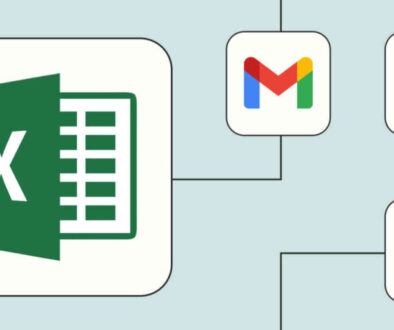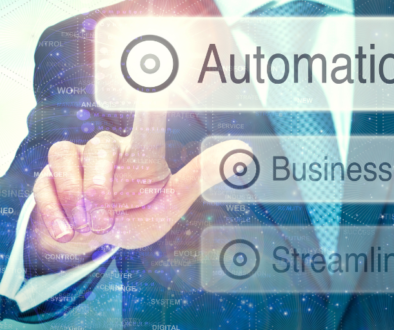Understanding Office Automation
No one argues that technology has revolutionized the way that offices function. But what is office automation really in practice? Office automation goes way beyond eliminating everyday paperwork. Using online tools can mean goodbye to paper, but it doesn’t mean being automated.
The concept involves the use of computer equipment, software, and applications to digitally collect, create, store, manipulate, and retransmit the information necessary for performing tasks and meeting office goals. Translating: When talking about office automation, we talk about managing information and resources with the help of technology, that is, using a workflow to improve company performance.
A workflow allows hours of work to be harnessed more efficiently, eliminating lost hours by exchanging emails or instant messaging services. The aim is to gather and organize everything in a single platform to facilitate the delivery of the projects on time, to help optimize the existing procedures, and to define an agile and competent work routine.
The Advantages Of Office Automation
Some of the biggest advantages of automating office workflows are:
- Increased ability to track responsibilities
- Possibility to delegate and follow the task of each employee
- Greater transparency, since the manager and the requester, can follow all the requests in real-time
- Easier to establish priorities, by controlling deadlines and sending alerts
- Higher utilization of working hours due to the reduced processing time of activities and manual errors
- Improved information security, through the generation of a database for indicators, management panels, statistics, and process performance metrics
- Greater control of the process, because people will do the right thing at the right time, increasing productivity
- Greater consistency and agility in data-based decision making
8 Fundamentals Of An Office Automation System
As you’ve seen, it’s not enough simply to adopt shared drives or task management software to automate an office. We need to go beyond that and understand every processing flow, to optimize them. To perfect your company’s workflows, you need to consider 8 essential fundamentals:
1. Easy workflow design
A modern office automation system should be designed and studied to make life easier for the end-user. The workflow brings together various features to design processes so that understanding the workflow is better for anyone who uses it.
Before choosing an office automation tool, you should create an intuitive workflow yourself by creating a sequence of tasks that you consider important to the process. Software should not determine or define the operations required for your business.
On the contrary, its function is to meet your needs in the simplest way, uncomplicating work routines and facilitating the exchange of team information.
2. Mobile compatibility
It’s extremely important that information is accessible to everyone through mobile devices. If you have remote employees or just want to access some serious information while waiting for a flight, the chosen office automation tool should be working perfectly on your phone, for example.
Commitments or actions cannot be delayed by depending on the response or presence of someone. Therefore, it’s imperative to keep information safe in the cloud, so that decisions are made quickly, without compromising the company’s activities.
3. Integration with other software
If you already use other tools, such as email marketing, CRM, financial systems, etc., it’s important to choose a system that allows integration with other software. Remember that the function of automation is to facilitate and not complicate.
Here are some examples of integrations you can include in your office automation:
- When receiving a complaint email, start a customer service process.
- After someone fills out a contact form on your website, the automation initiates an opportunity process in sales.
- When you include a row in a Google Sheets worksheet, you start an account payment process.
4. Task management
- Do you use emails to track requests and processes?
- How does your team manage these emails?
- Can you access the email inboxes of your employees?
- Do you ask your team to copy you into all messages so you know about every request? How many emails do you receive per day?
If any of these questions caused any discomfort, you may need an automation tool with a “task management” feature.
5. Deadline management
Are there any doubts about “time is money”? No, right?
You can’t make up for lost time, which is why you need to be as rational and optimized as possible in managing office tasks. Set deadlines for processes or types of requests. If possible, also set deadlines for each task in the process and monitor them.
6. Transparency
How are other areas or teams demanding your services? Do they send an email? Communicate by phone?
It’s very important that you make available to your internal customers a technological tool that allows the registration of requests in a structured form. This will allow your team to have all the information they need to perform each task. They won’t need to decipher what you’re asking them in a long and unobtrusive email.
In addition, this service channel must provide information about each step performed in the request. It will also prevent new calls or new follow-up emails. Your office and your business will become quieter!
7. Reporting and Analytics
To know if your office automation is delivering results, you need to be aware of the numbers. Data are the main aids in decision making and it’s important for your company to compare the history of a process, its speed, the quality of the result, and so on.
Adopting software just to measure your workflow data, such as hours worked, is unnecessary since the best office automation products already have built-in reporting and analysis capability.
8. Access control
It’s critical that you be able to grant access authorizations for all of your workflows, that is, allow or deny access to information that you consider confidential. A good workflow automation system doesn’t ignore this feature, after all, it’s a measure of information security.
Automating is not, as many people think, to replace humans with “machines”. This is absolutely wrong! One of the most important functions of automation is to have access to data in order to control and thus always improve your processes.
Level Up Your Automation Goals
Call Epic IT Consulting today at 608-496-8660 or fill out our online form.



